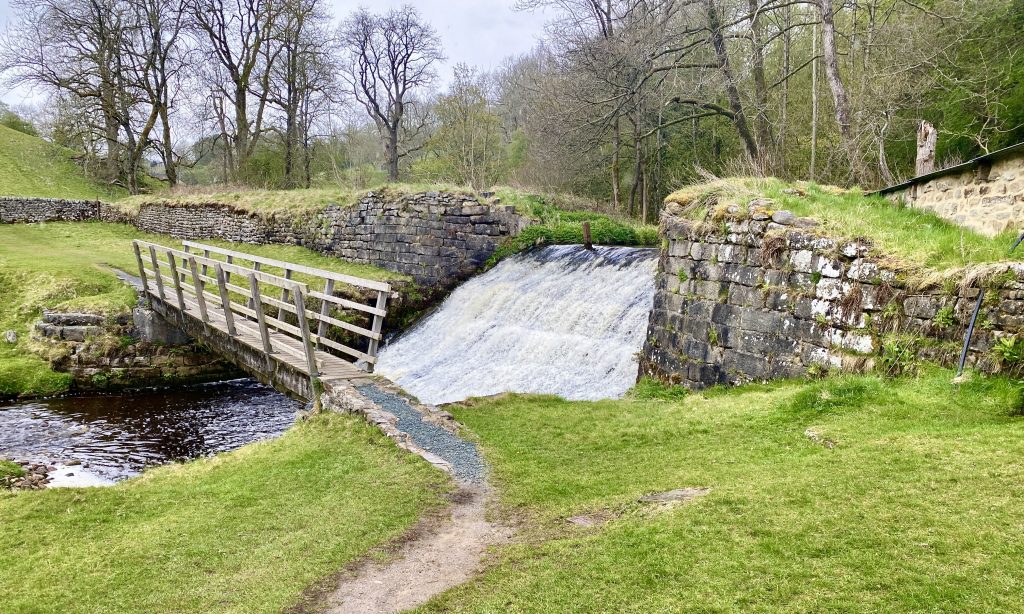East out of Hebden along the B6265 to Bank Top, then north on Backstone Edge Lane (Track) across Hebden Moor to Knots Top. South-east to Grimwith Reservoir, continuing across its dam and around its southern perimeter to High Shaws Lathe. South-east to cross the B6265 road near Dry Gill and generally south-west on tracks and paths to Trollers Gill, before following the course of Skyreholme Beck to Middle Skyreholme. Up to High Skyreholme then south-west along Howgill Lane to Howgill, completing the walk by following the Dales Way alongside the River Wharfe via Burnsall and the Hebden Suspension Bridge. A 14-mile walk in the Yorkshire Dales.
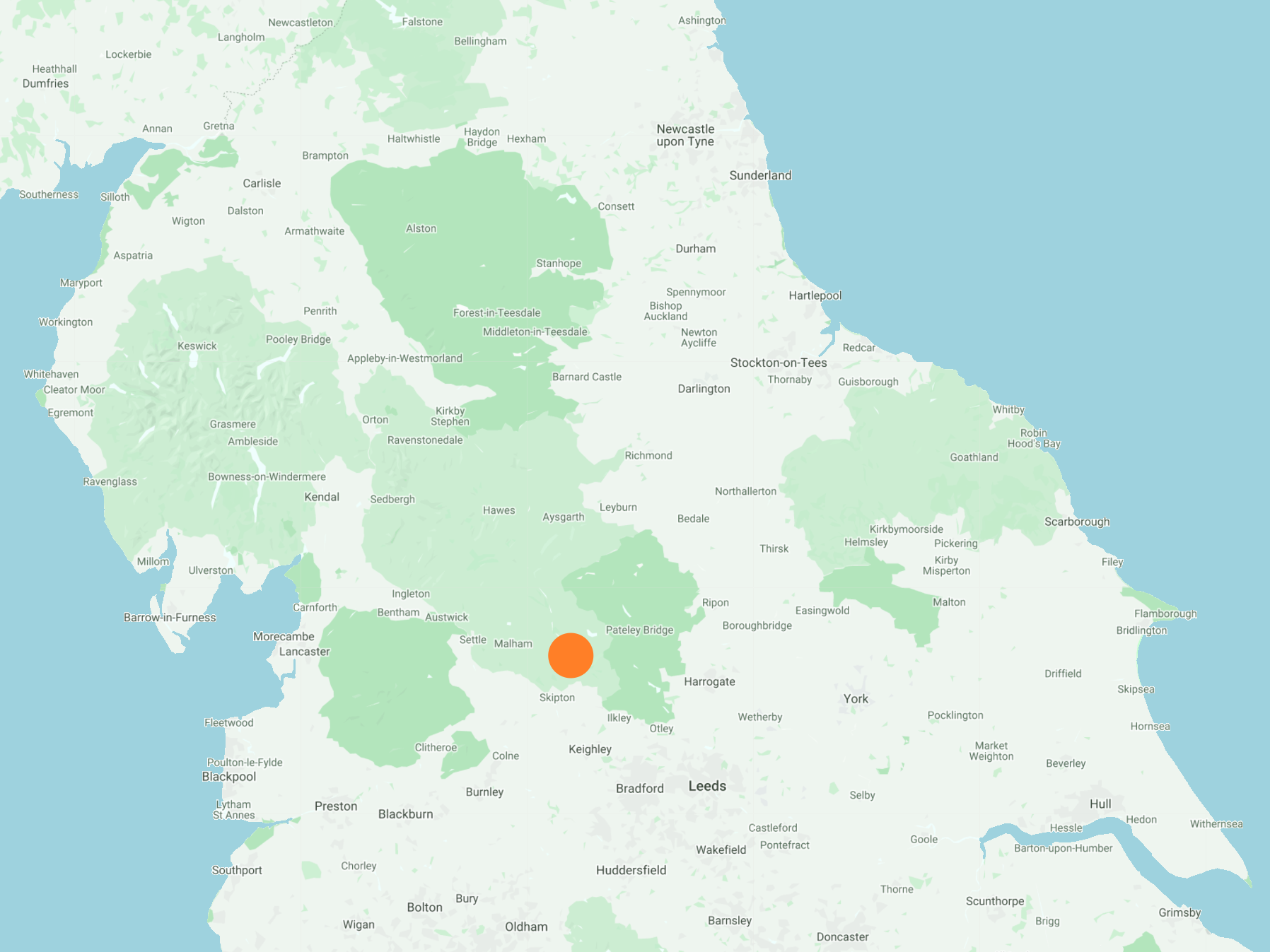
Recommended Ordnance Survey Map
The best map to use on this walk is the Ordnance Survey map of the Yorkshire Dales Southern & Western Area, reference OS Explorer OL2, scale 1:25,000. It clearly displays footpaths, rights of way, open access land and vegetation on the ground, making it ideal for walking, running and hiking. The map can be purchased from Amazon in either a standard, paper version or a weatherproof, laminated version, as shown below.
Standard Version
Looking back towards Hebden from the B6265.
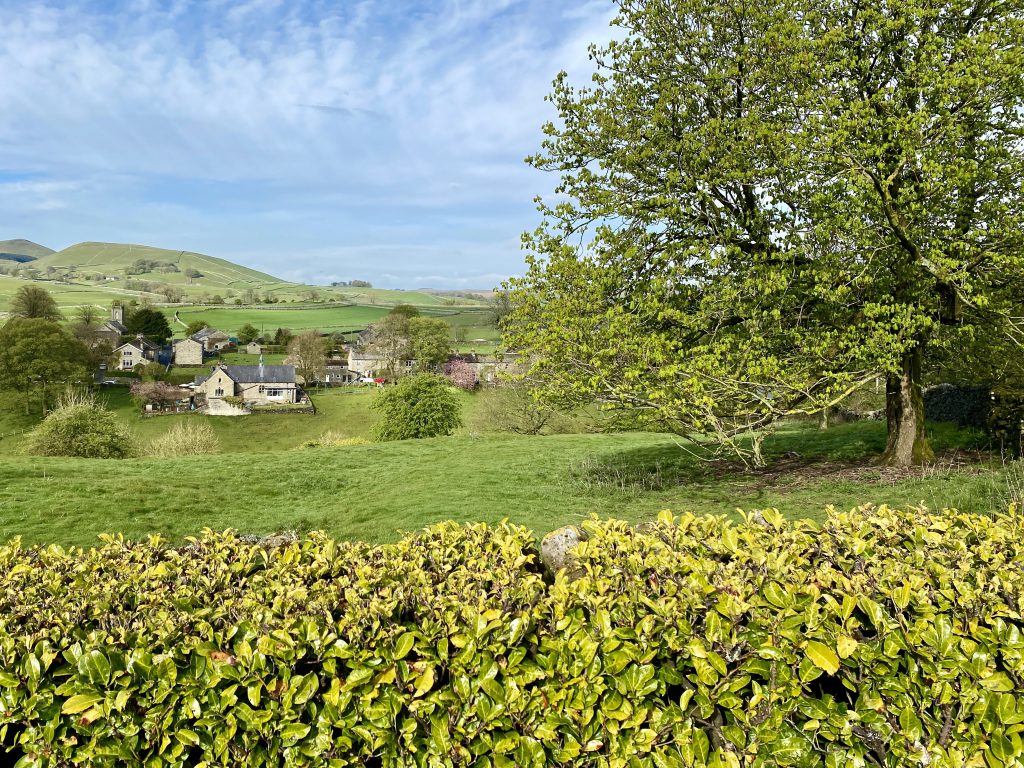
The view south from the B6265 to the crags of Burnsall & Thorpe Fell.
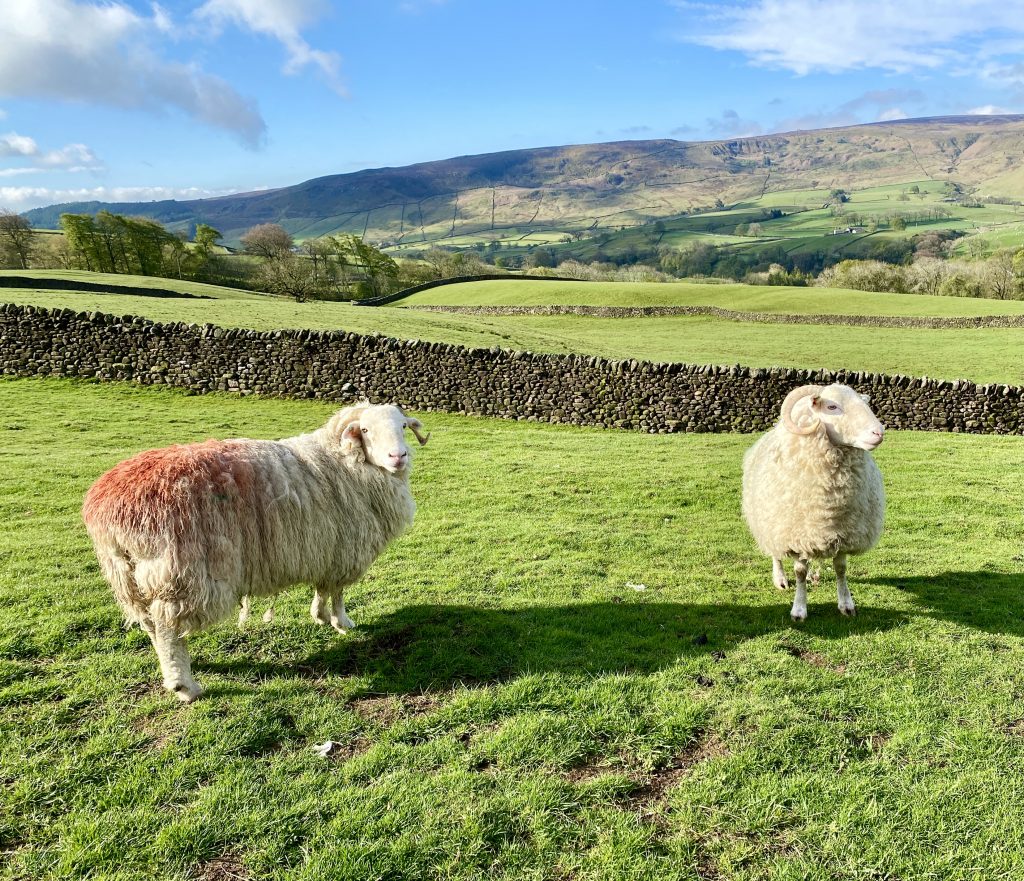
Backstone Edge Lane (Track) across Hebden Moor.
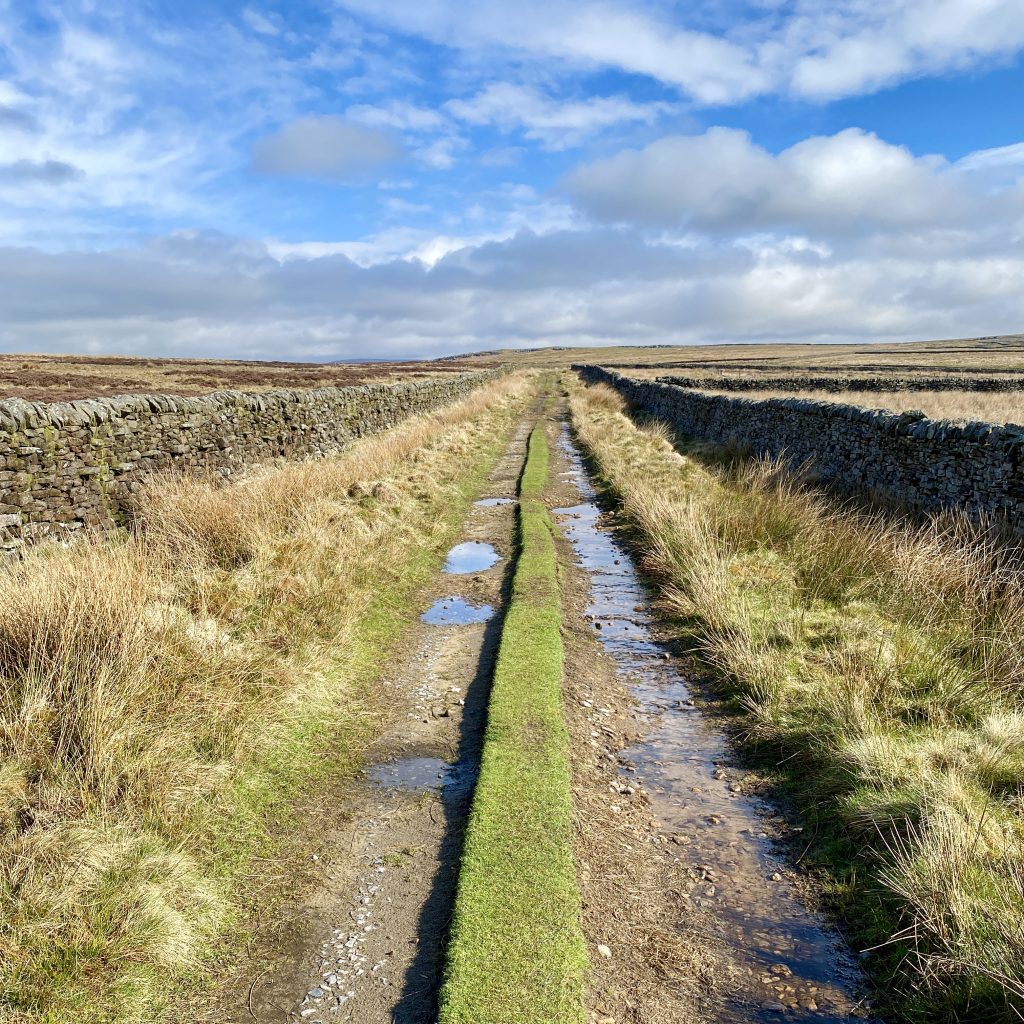
Grimwith Reservoir as seen from Knots Top.
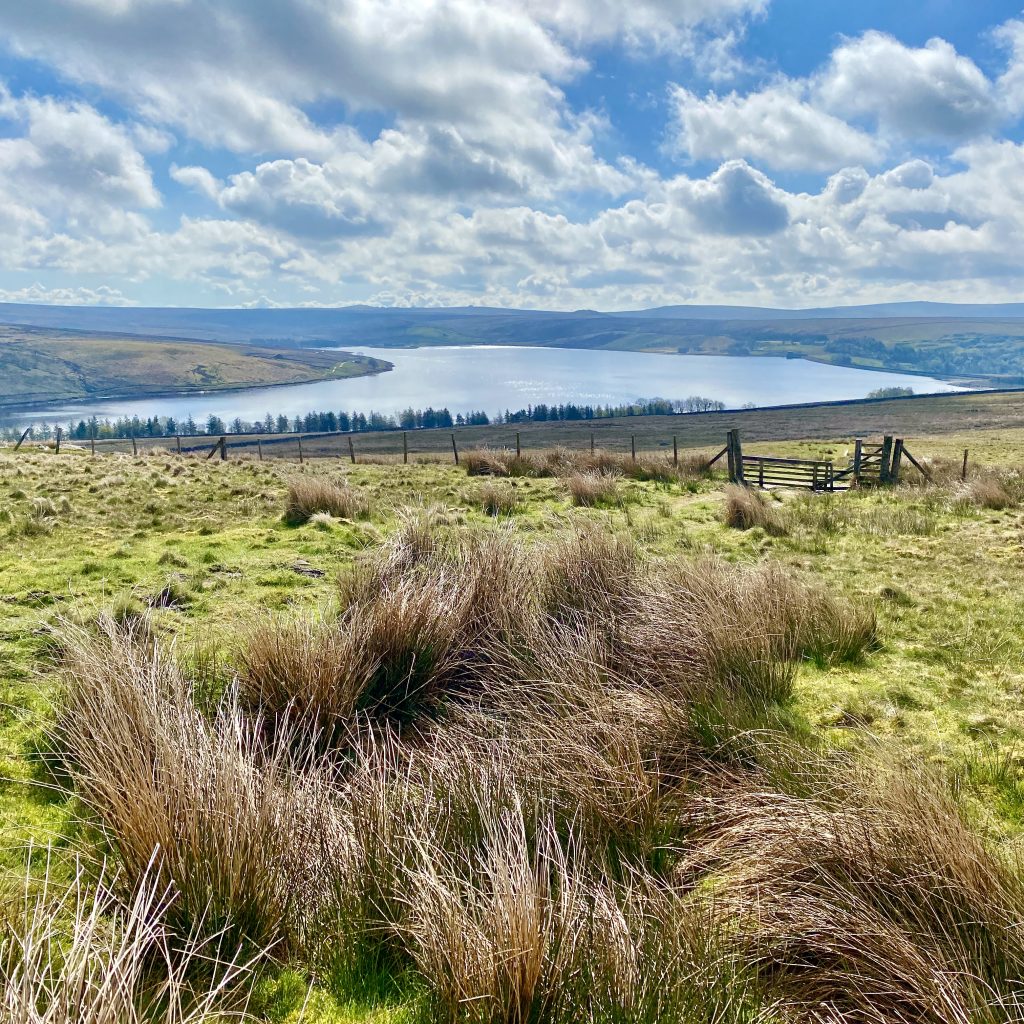
Hartlington Moor Lane to the west of Grimwith Reservoir.
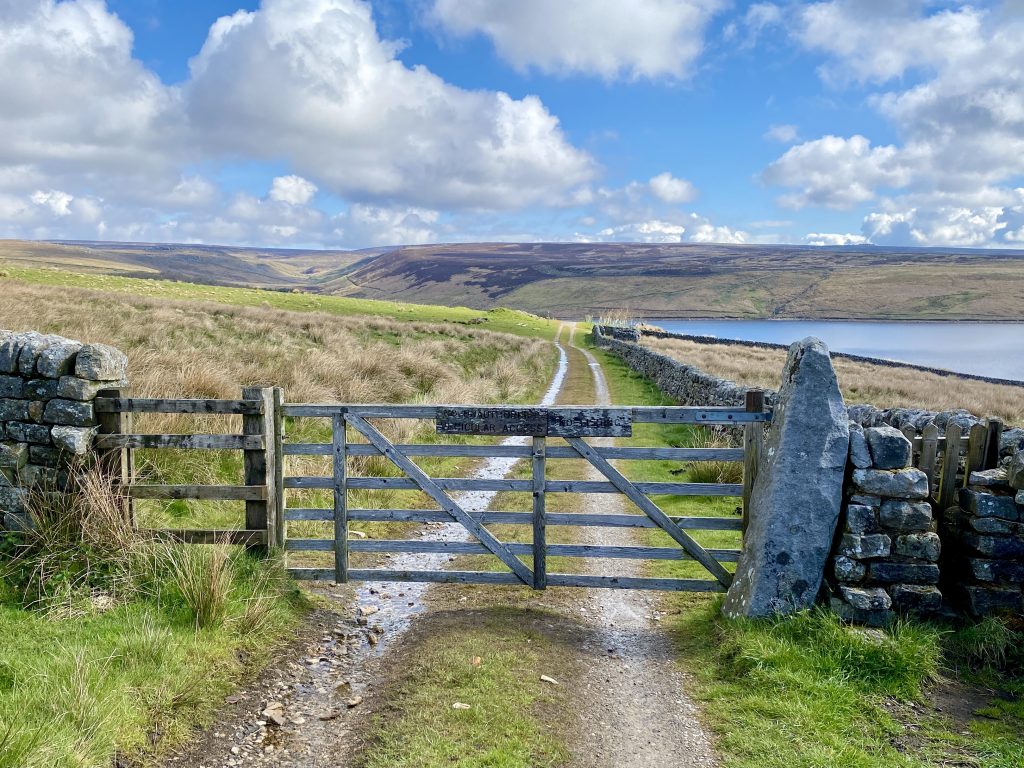
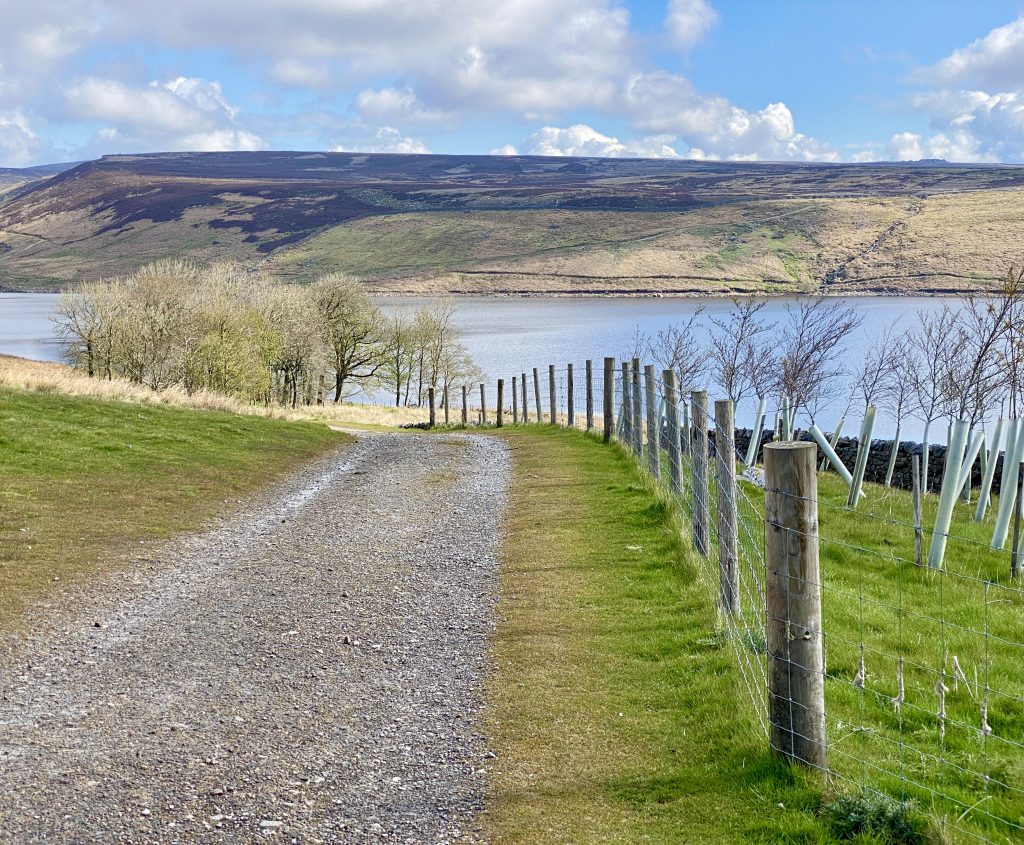
A footpath around Grimwith Reservoir makes a lovely 4-mile circular stroll. The reservoir has a large car park which can be easily reached from the B6265 about 2½ miles east of Hebden.
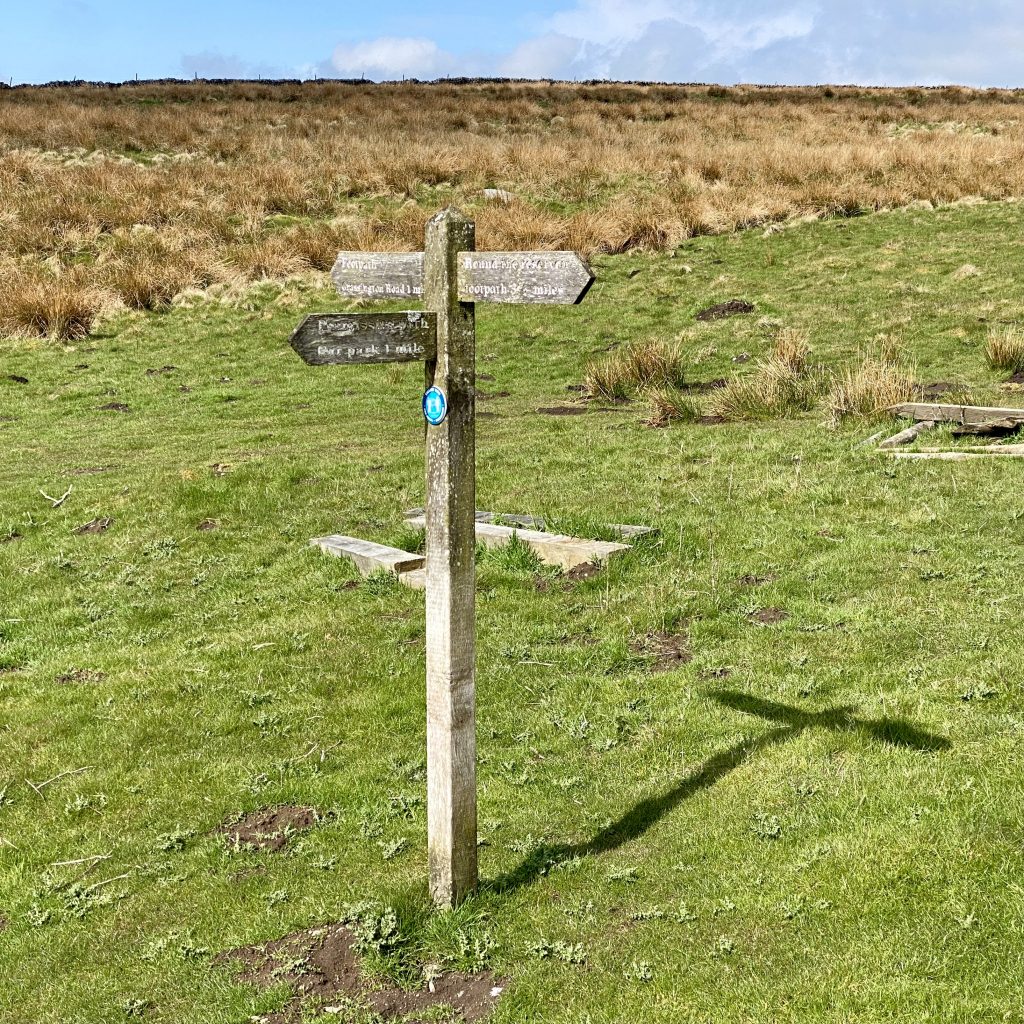
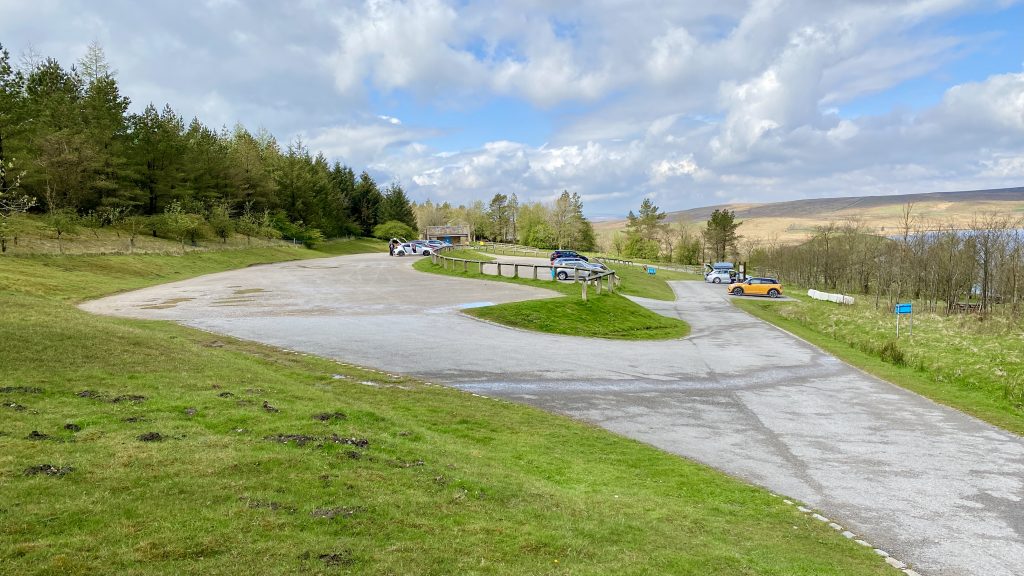
Collapsed dry stone wall near Three Mires.
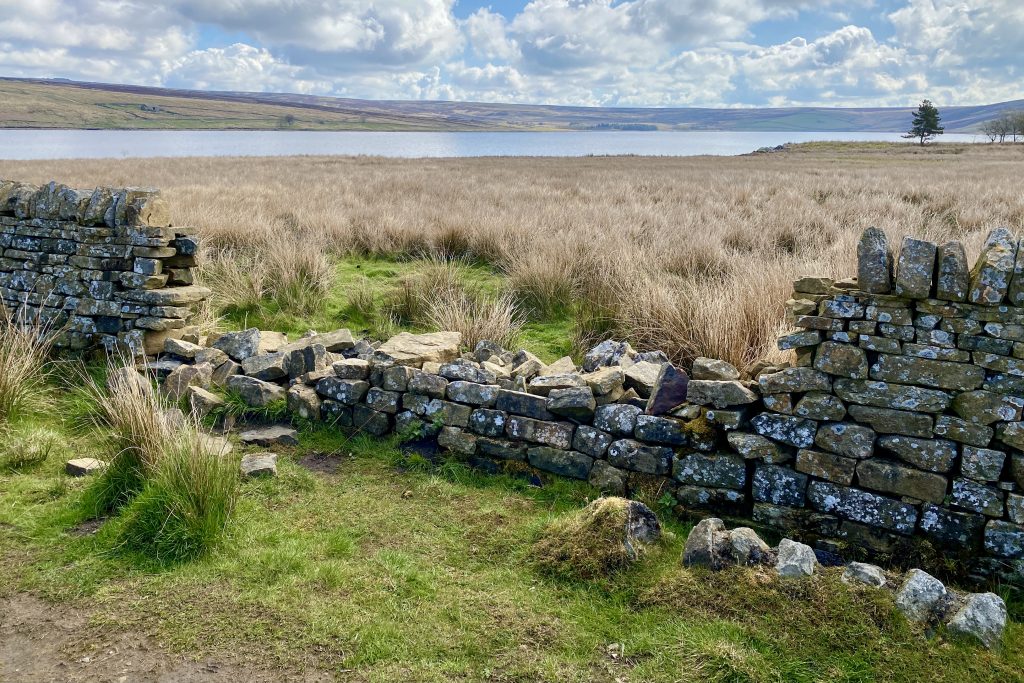
The Grimwith Reservoir dam.
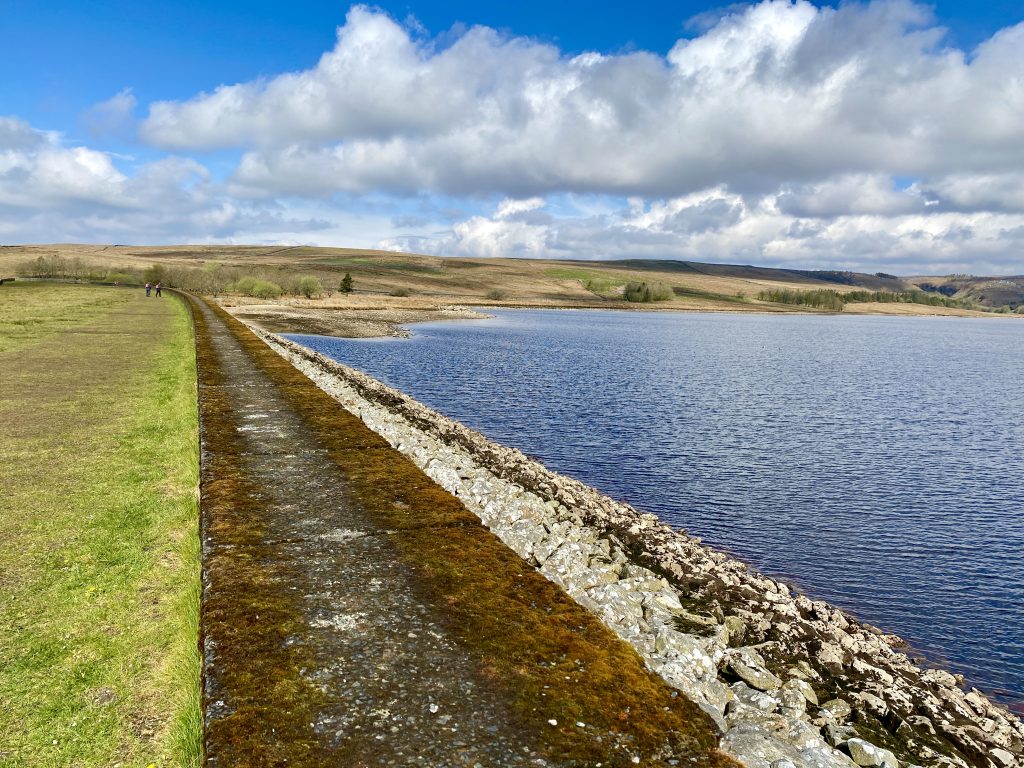
Grimwith Reservoir valve tower.
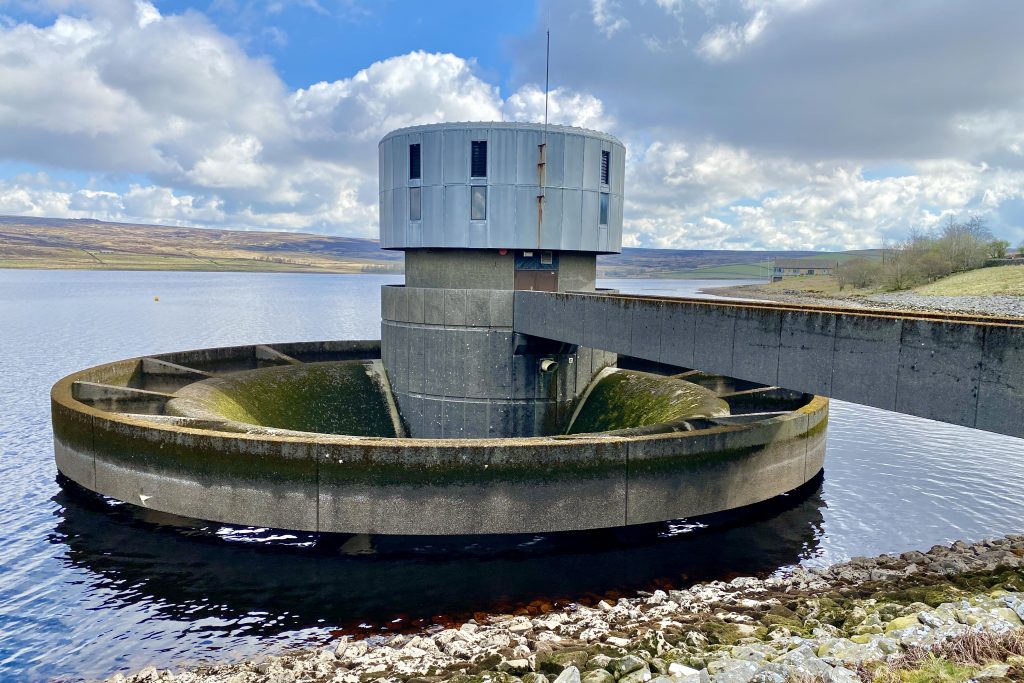
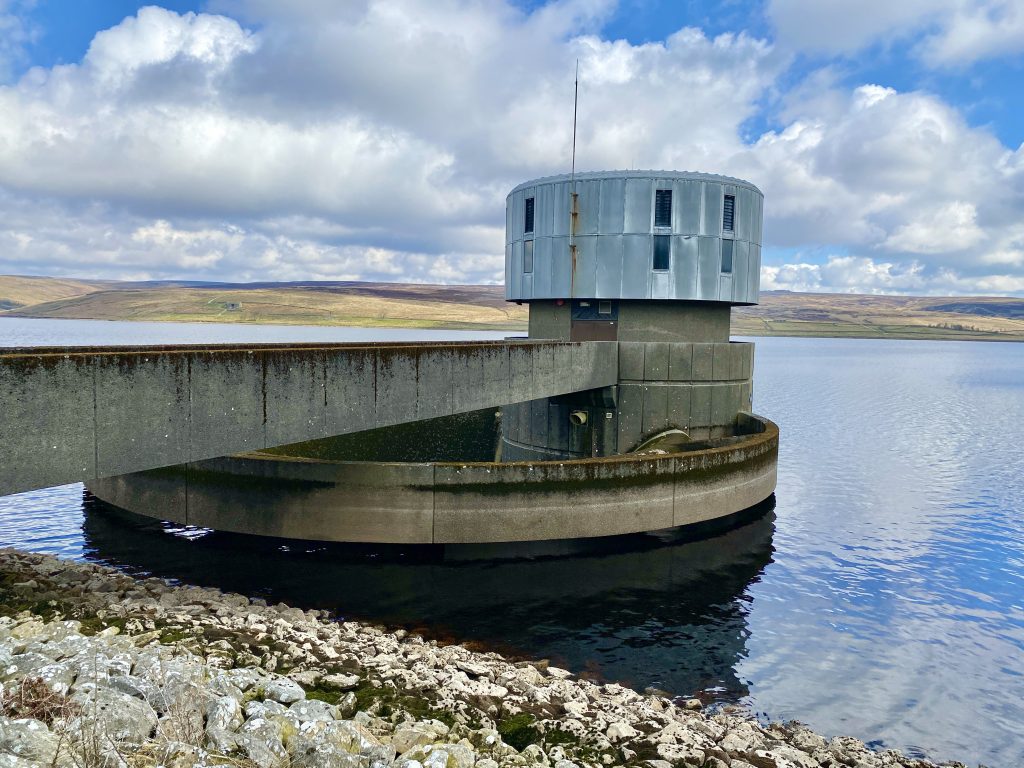
The view north-west across Grimwith Reservoir from the path below Grimwith Fell.
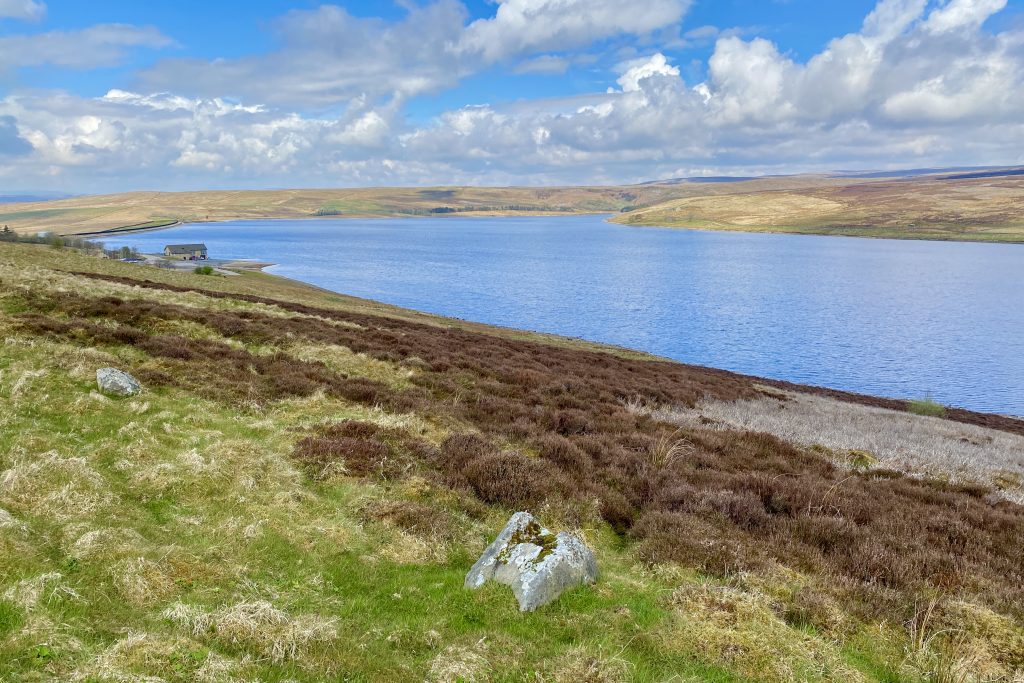
Grimwith High Laithe
The word ‘Laithe’ comes from the Viking name for barn. There are other barns in the Grimwith Reservoir area but this one is quite different, with its steep pitched roof and heather thatch.
In the 1970s when the reservoir was expanded to its current size, historians recognised that this barn was an important example of a cruck barn and it was preserved. In medieval times all barns in the Yorkshire Dales would have been built using huge A-shaped frames called crucks. The walls would have been infilled with wood or rubble and the roofs would have been thatched with straw or heather.
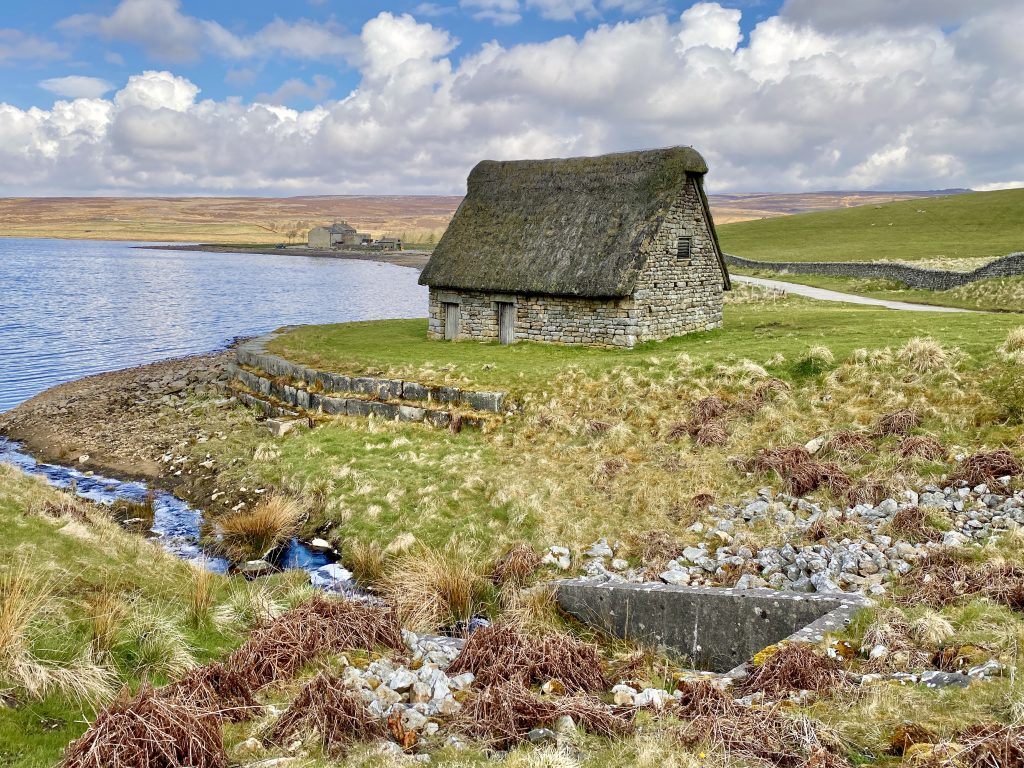
By the 17th century the big trees needed to make the crucks had become scarce so as the wooden cruck barns began to rot they were gradually replaced by the stone-walled and roofed ones we see today.
High Laithe may date to the very end of the period when cruck barns were still being built so it is probably about 400 years old.
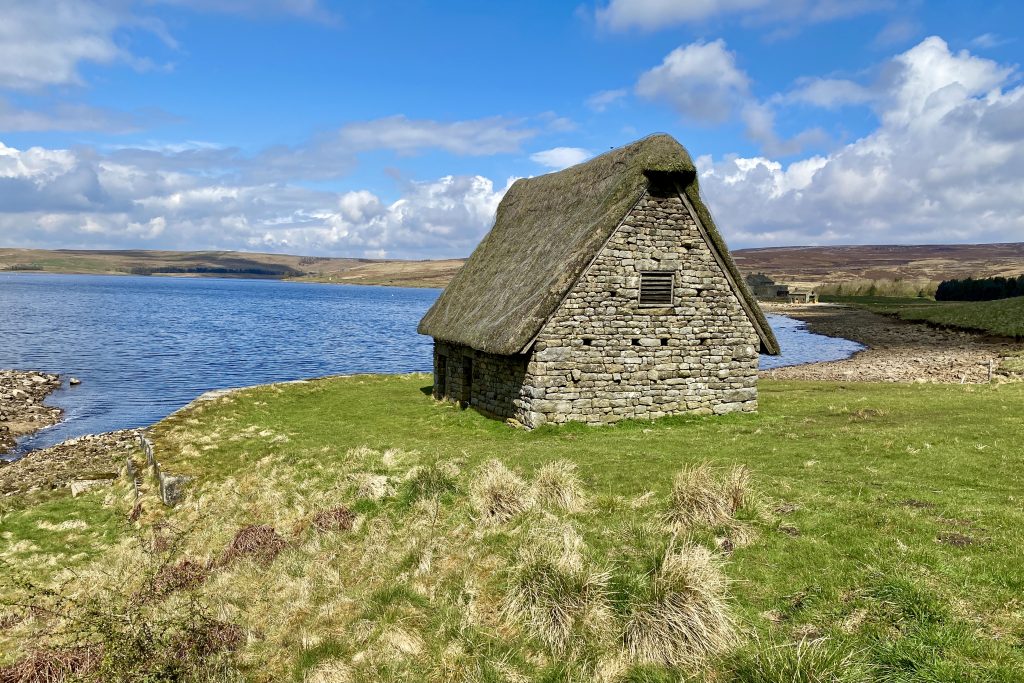
Black Hill Road near Dry Gill.
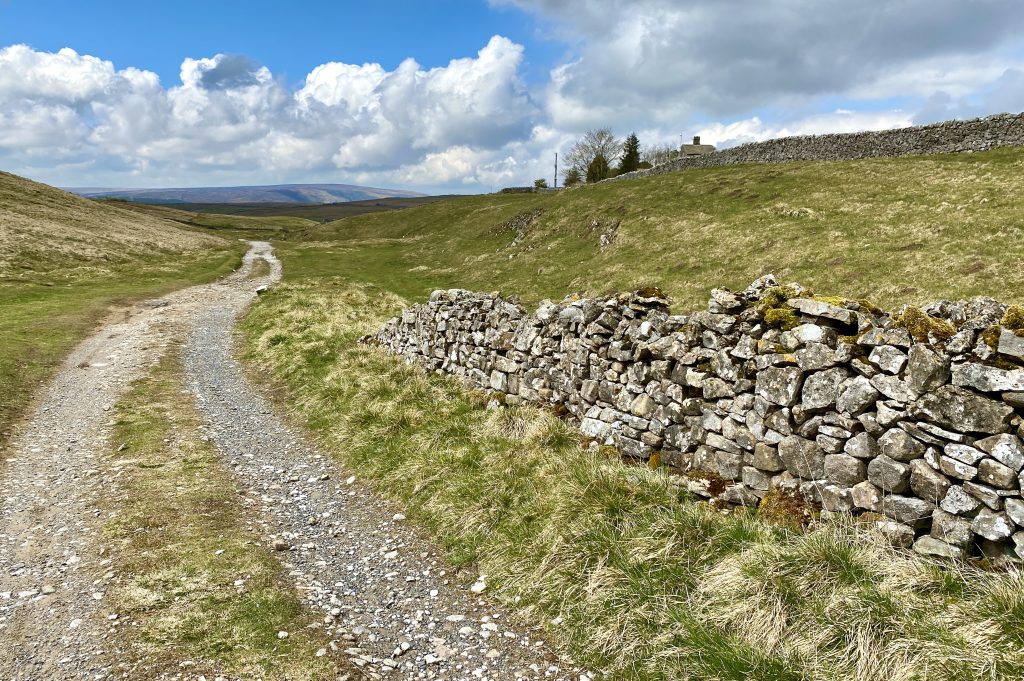
Dry Gill.
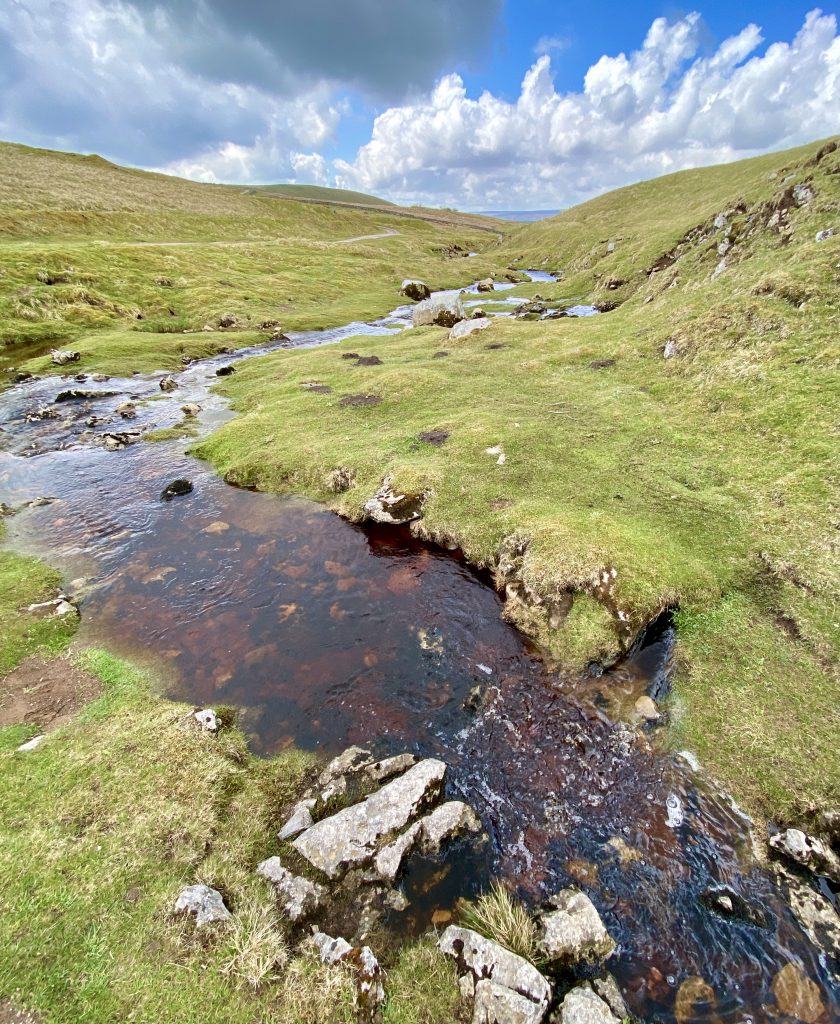
Evidence of lead mining near Gill Heads with levels (horizontal tunnels used to gain access to the lead veins deeper in the hillside) and spoil heaps (the waste material discarded during the mining process).
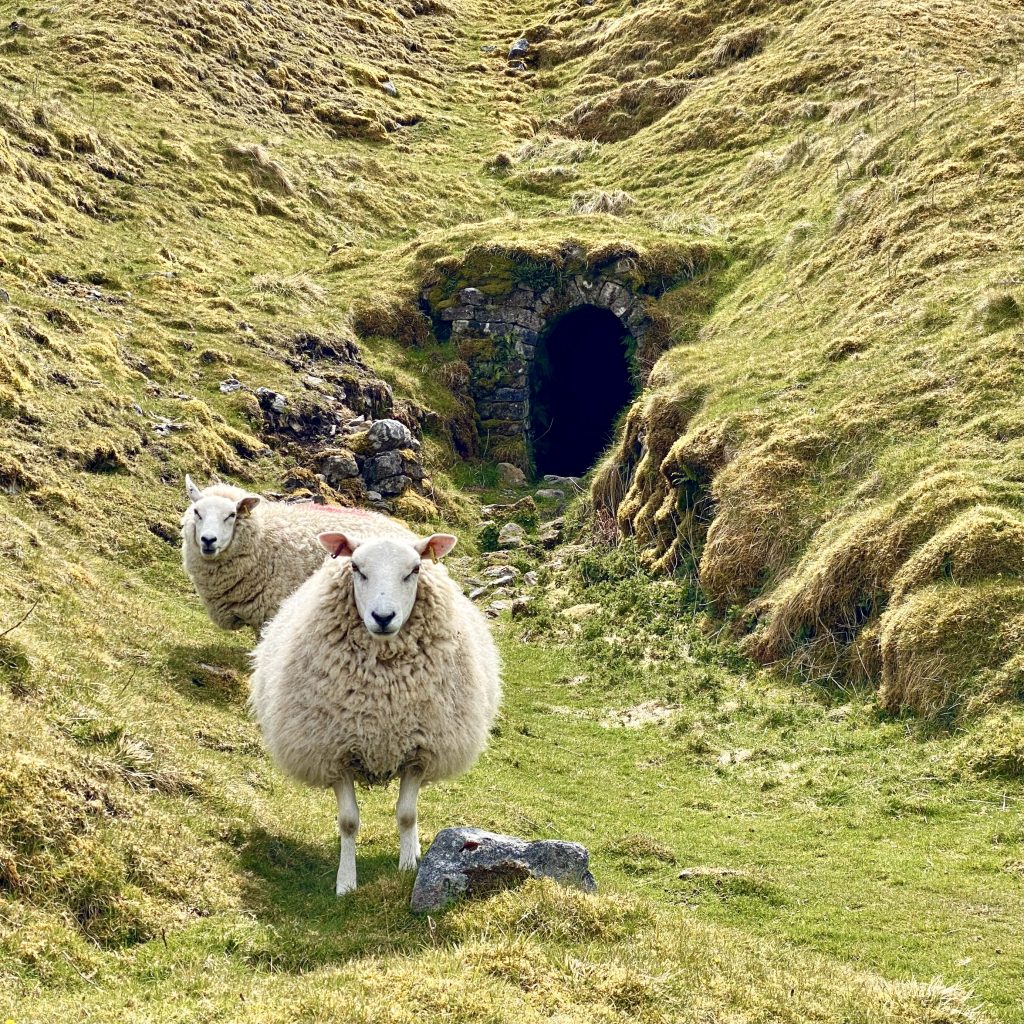
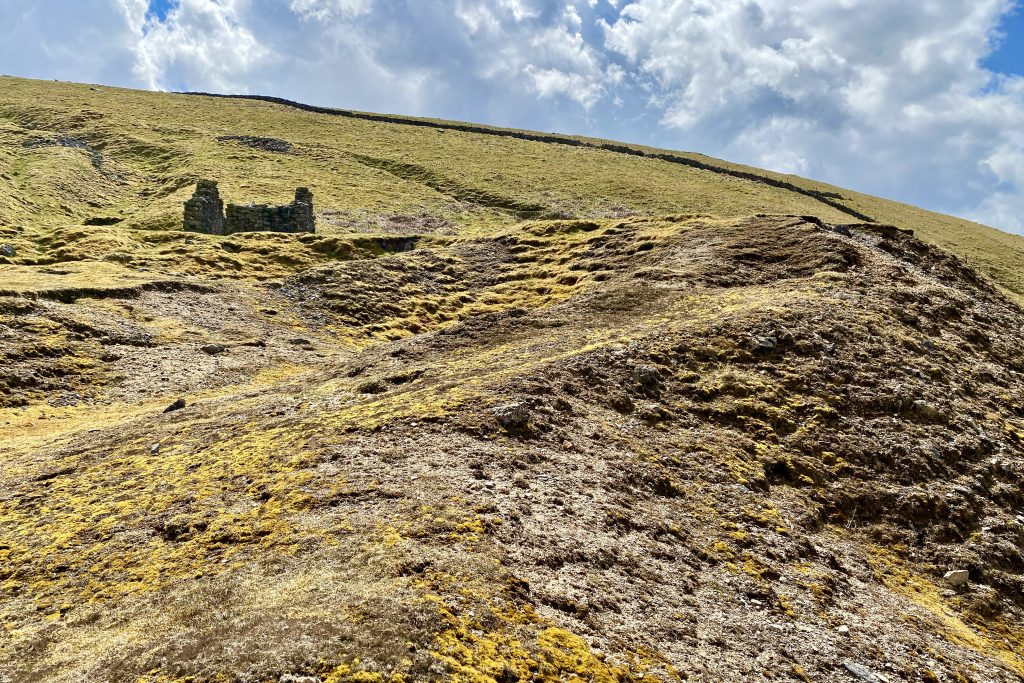
Dry Gill before it reaches the Trollers Gill gorge and becomes Skyreholme Beck.
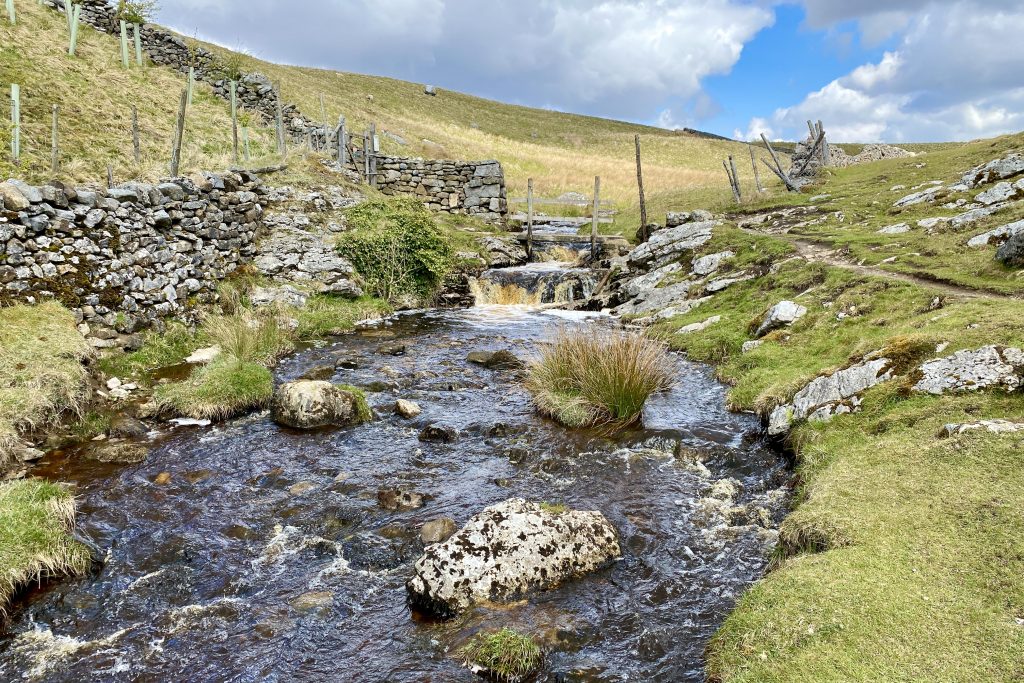
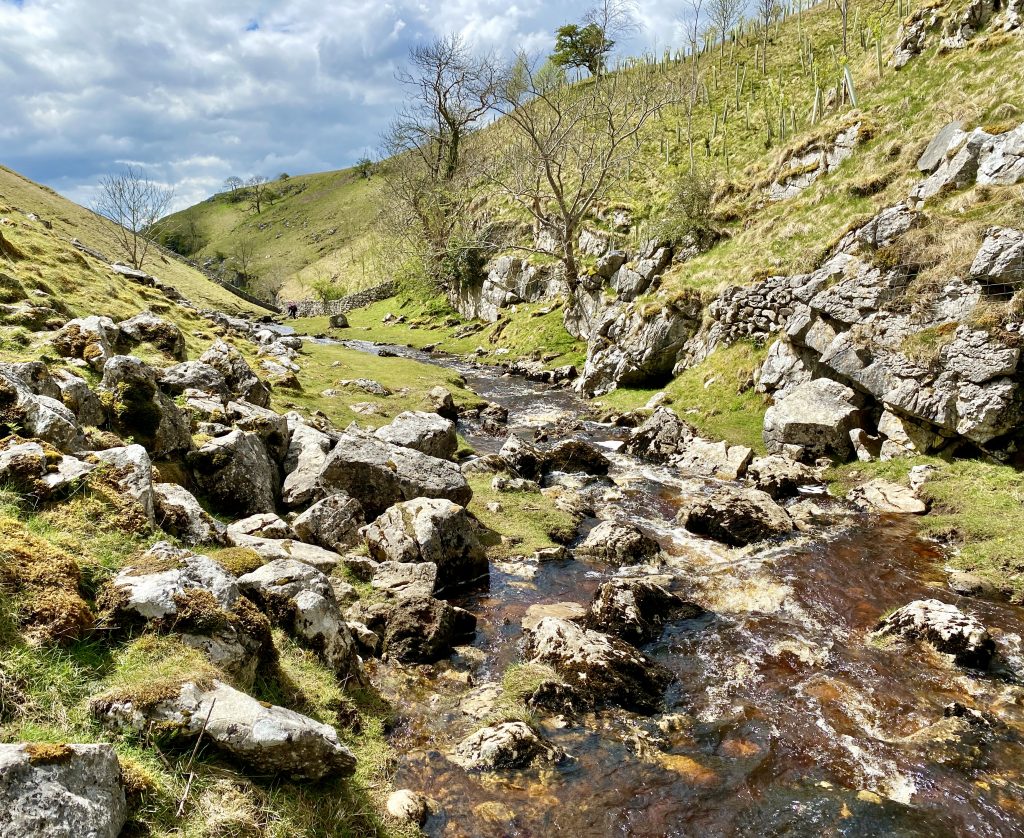
The Trollers Gill limestone gorge has been cut into the landscape by Dry Gill / Skyreholme Beck over thousands of years. The gill is about half a mile long and is named after the supposed existence of trolls who used to live there.
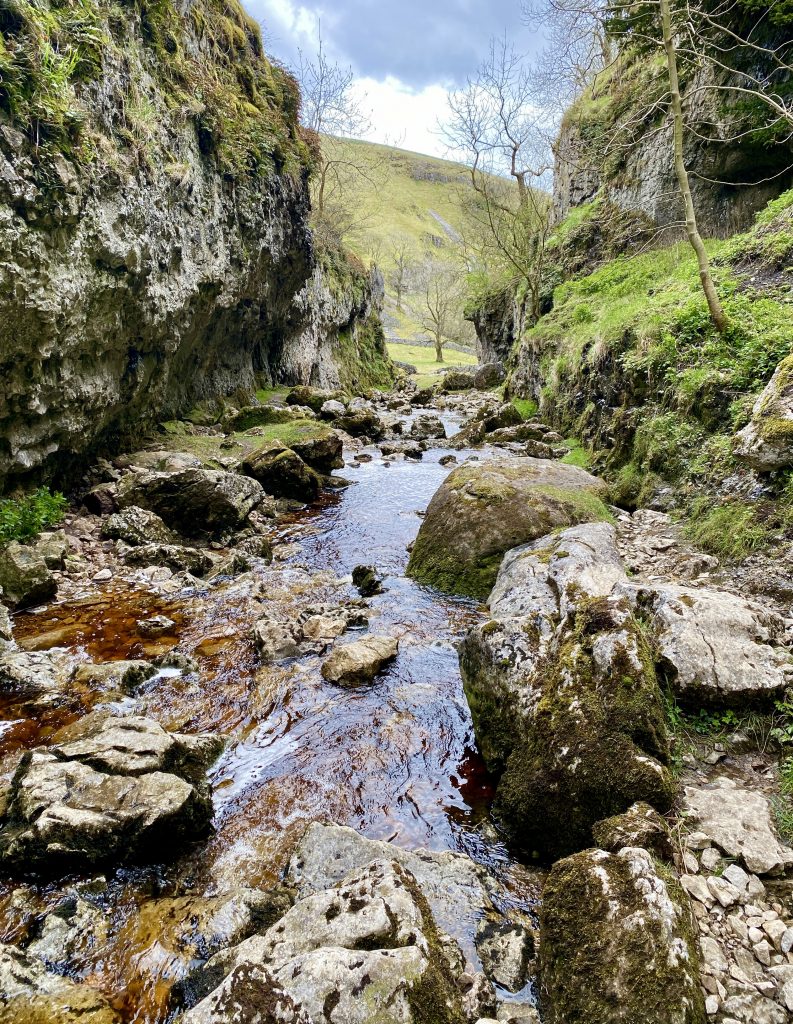
The Skyreholme Beck valley.
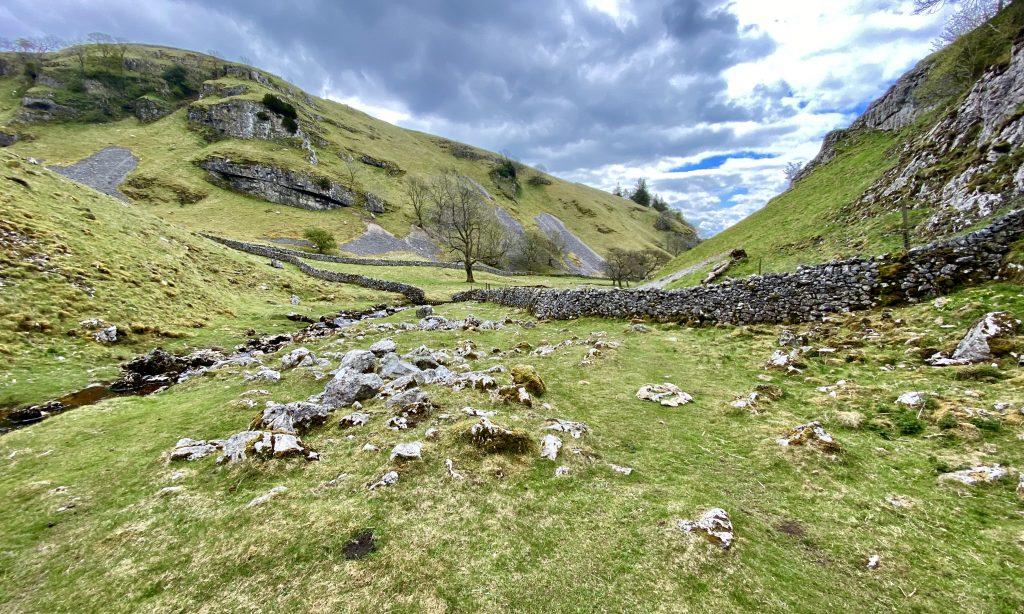
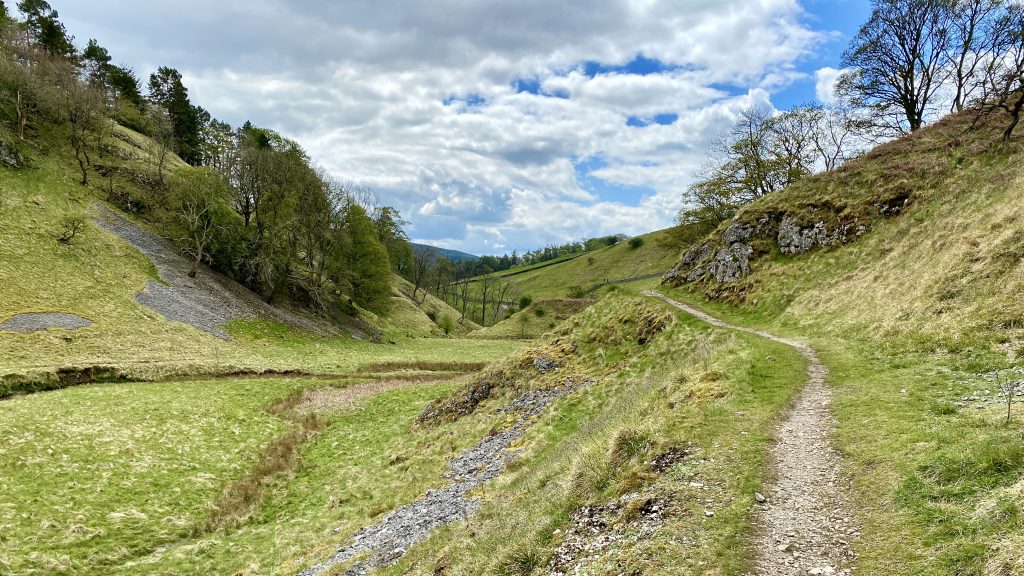
The path from the Skyreholme Beck valley to Middle Skyreholme. The rocky outcrop of Simon’s Seat can be seen in the distance on Barden Fell.
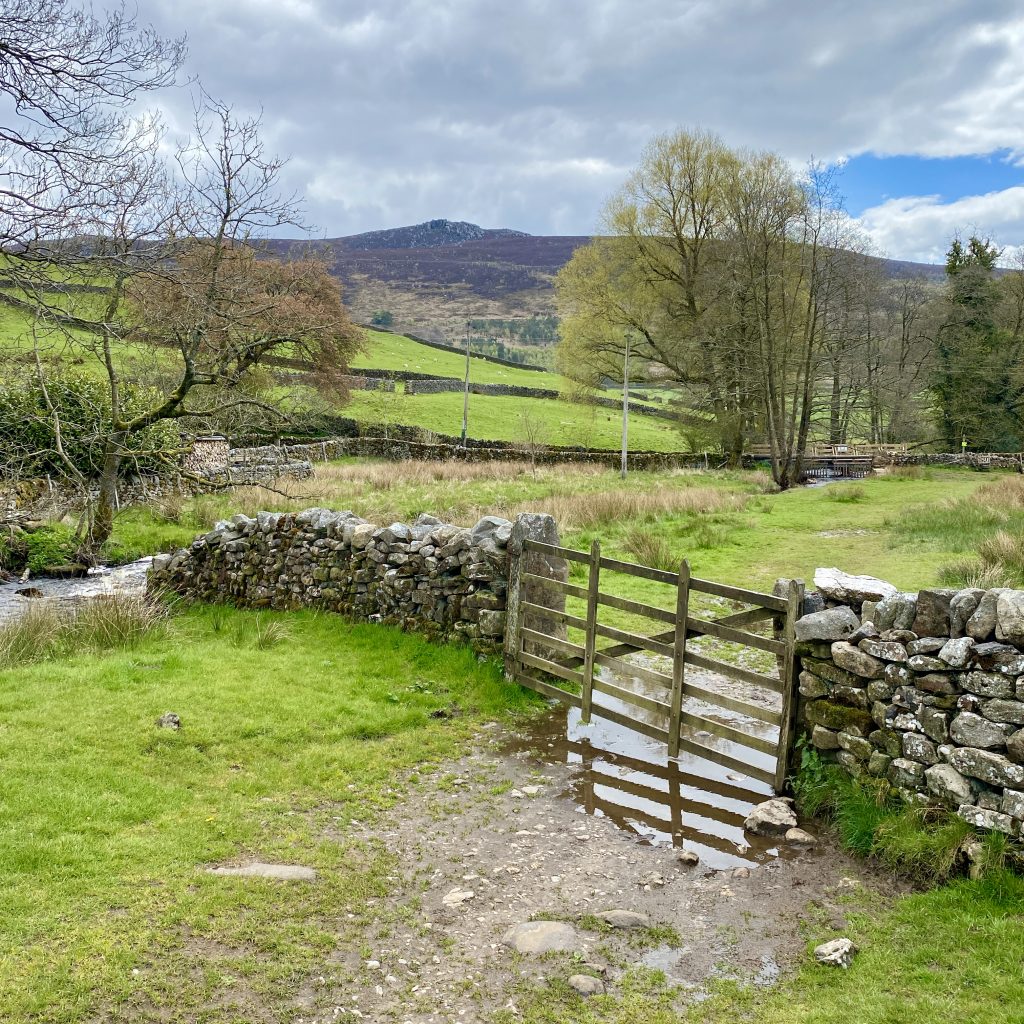
The public footpath runs through a farm at High Skyreholme, and you feel as though you are trespassing on private property.
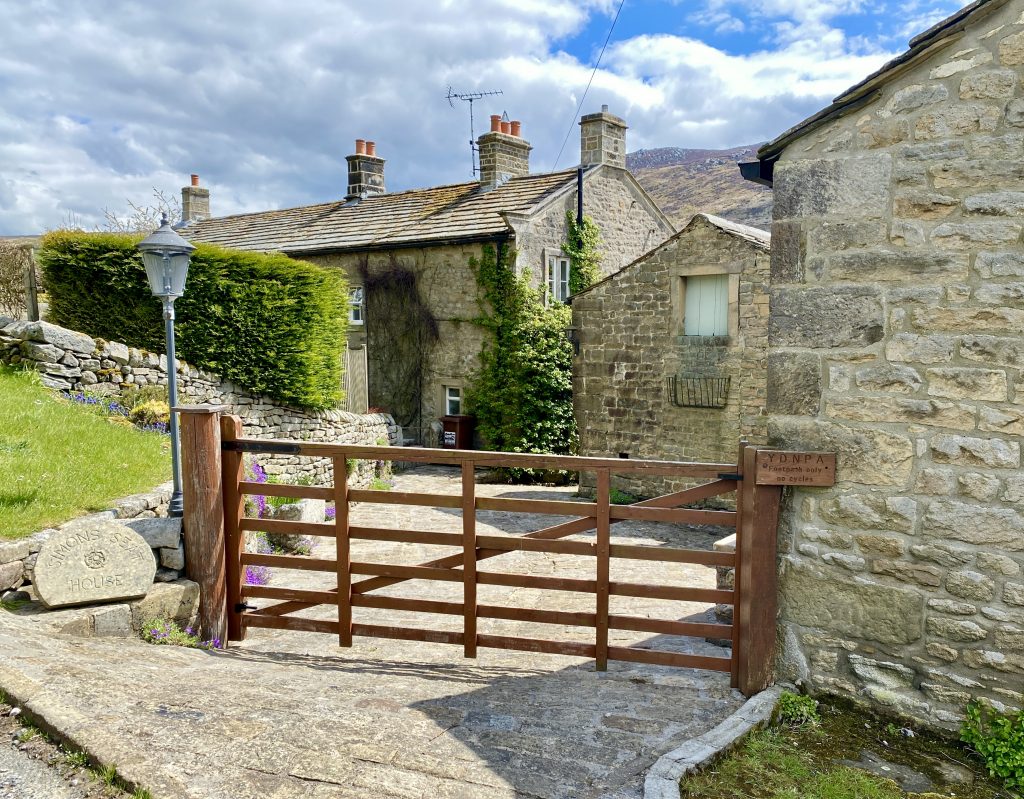
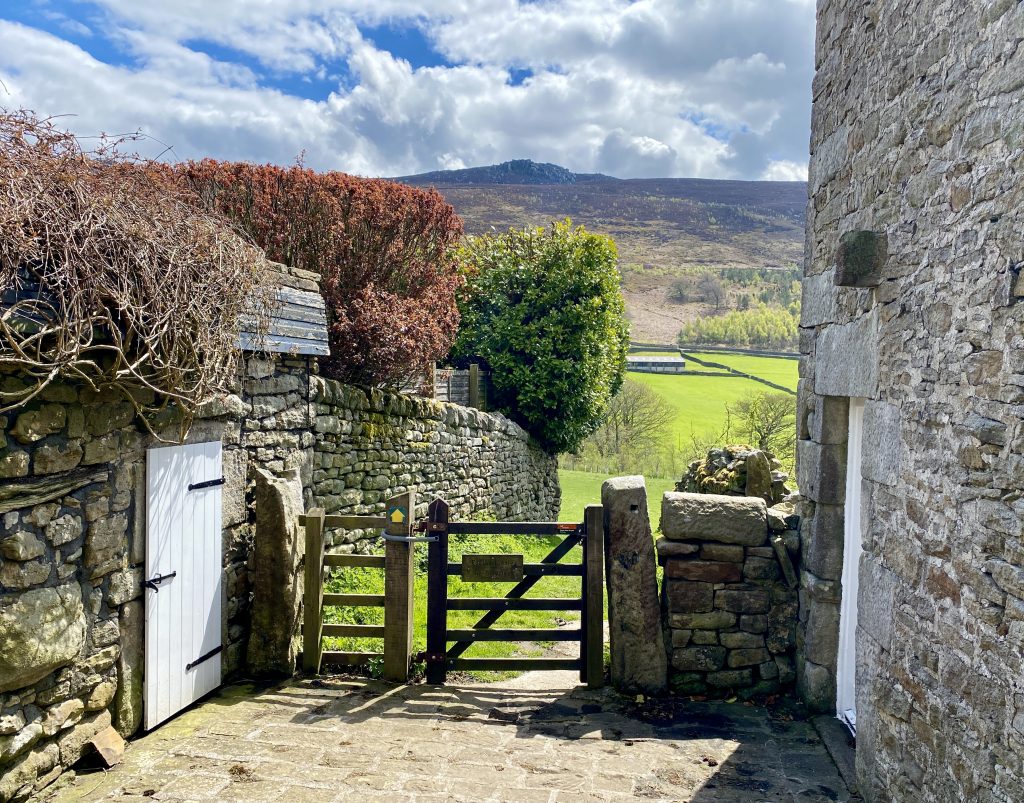
Howgill Lane.
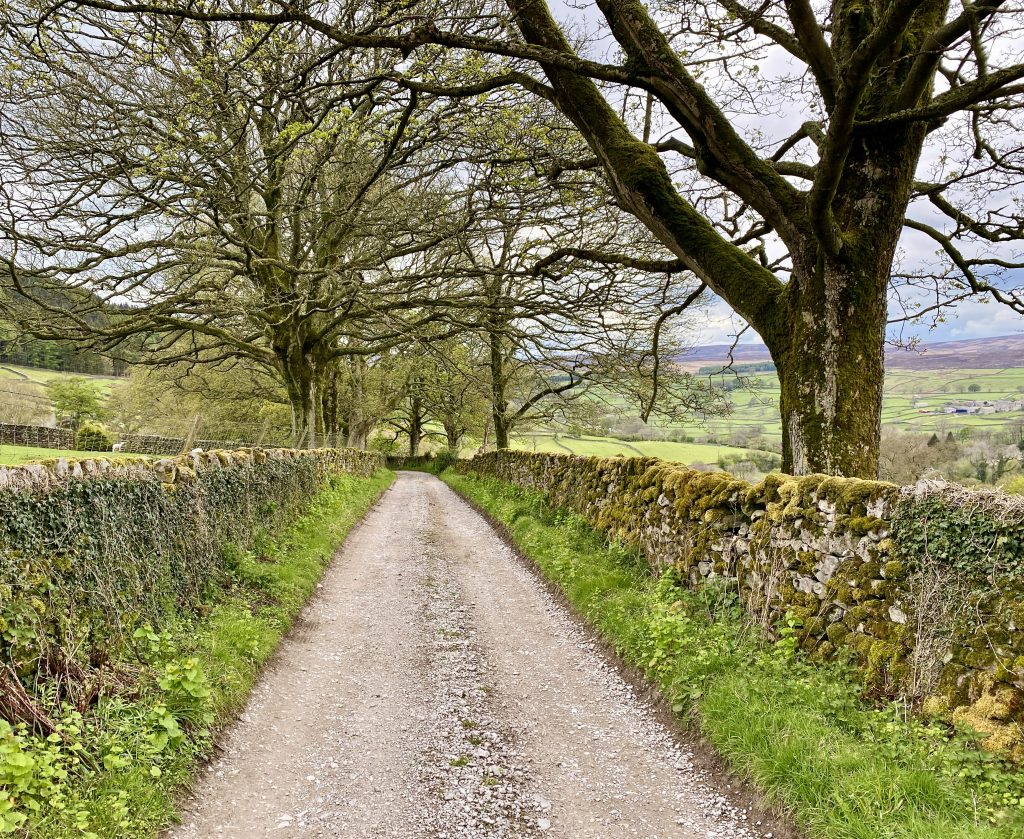
Howgill Barn on Howgill Lane. Accommodation established in 2020.
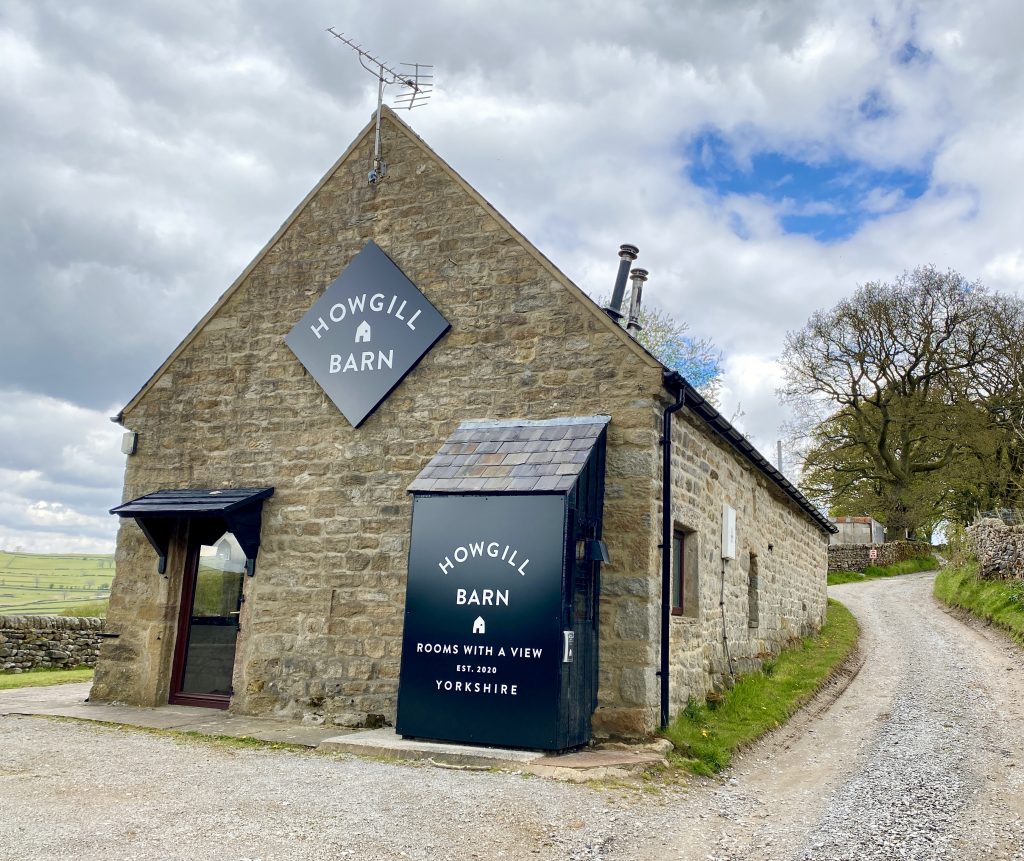
A beautiful purple carpet of flowering bluebells in woodland just west of Howgill.
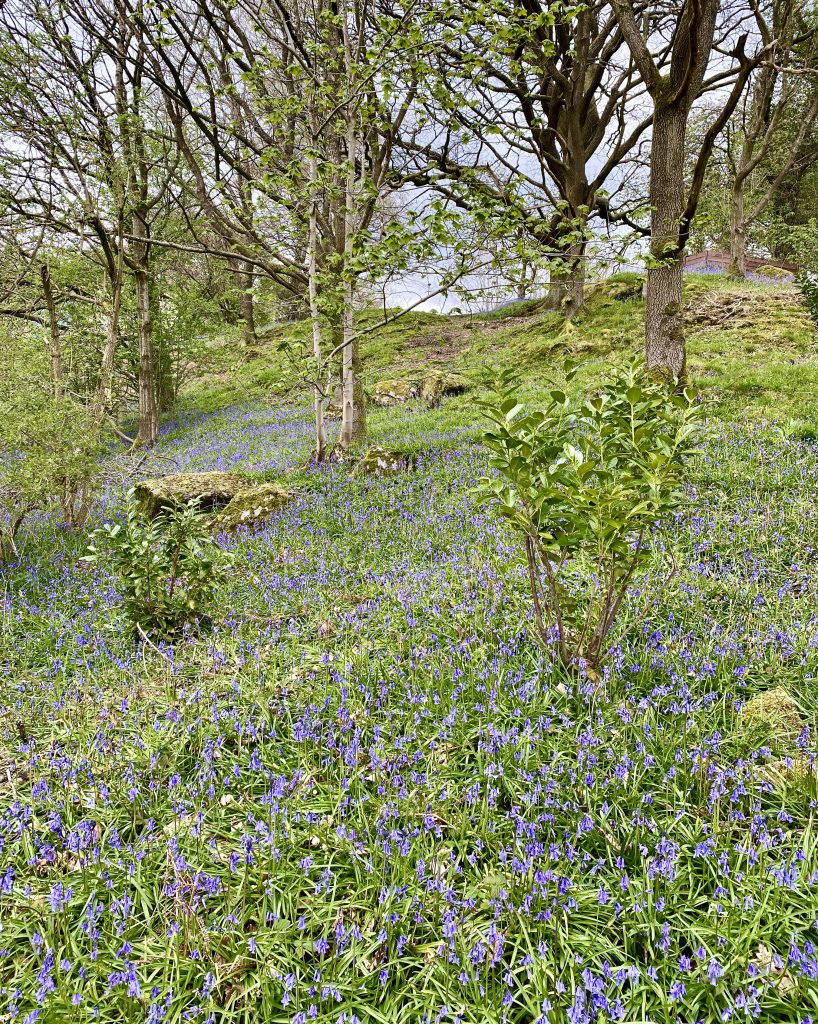
Rapids on the River Wharfe visible from the Dales Way footpath south of Appletreewick.
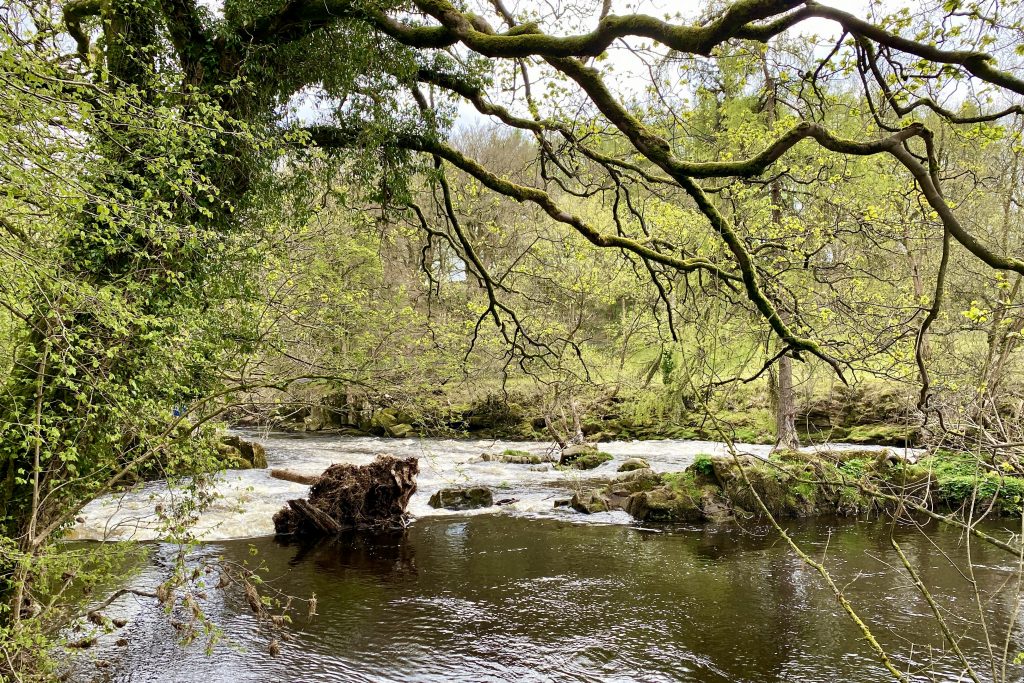
The River Wharfe near Burnsall.

Burnsall Bridge
The original stone bridge was built in 1609 thanks to a gift of money from local benefactor Sir William Craven who also paid for Burnsall Grammar School. In 1752 it was described as being ‘a good bridge and all paved’. It was restored or possibly rebuilt in 1884 following flood damage. It has three main arches and two smaller ones.
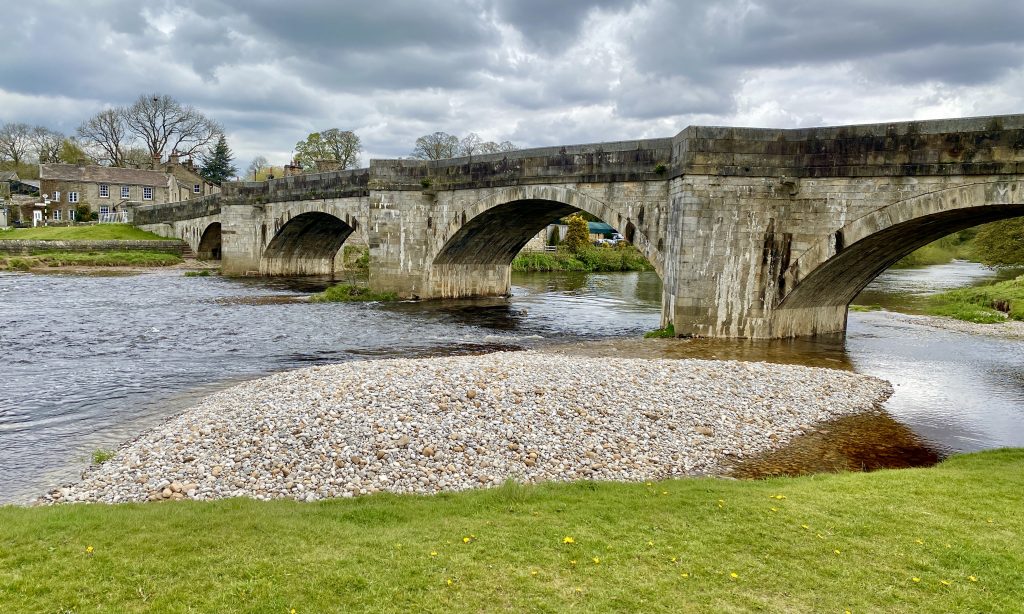
The River Wharfe between Burnsall and the Hebden Suspension Bridge.
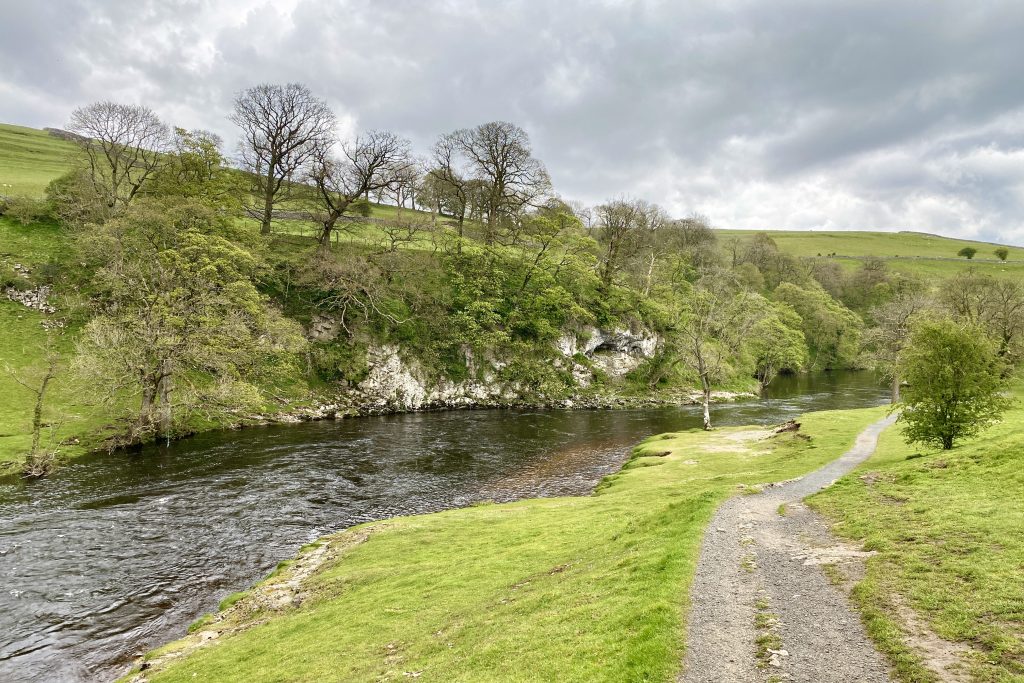
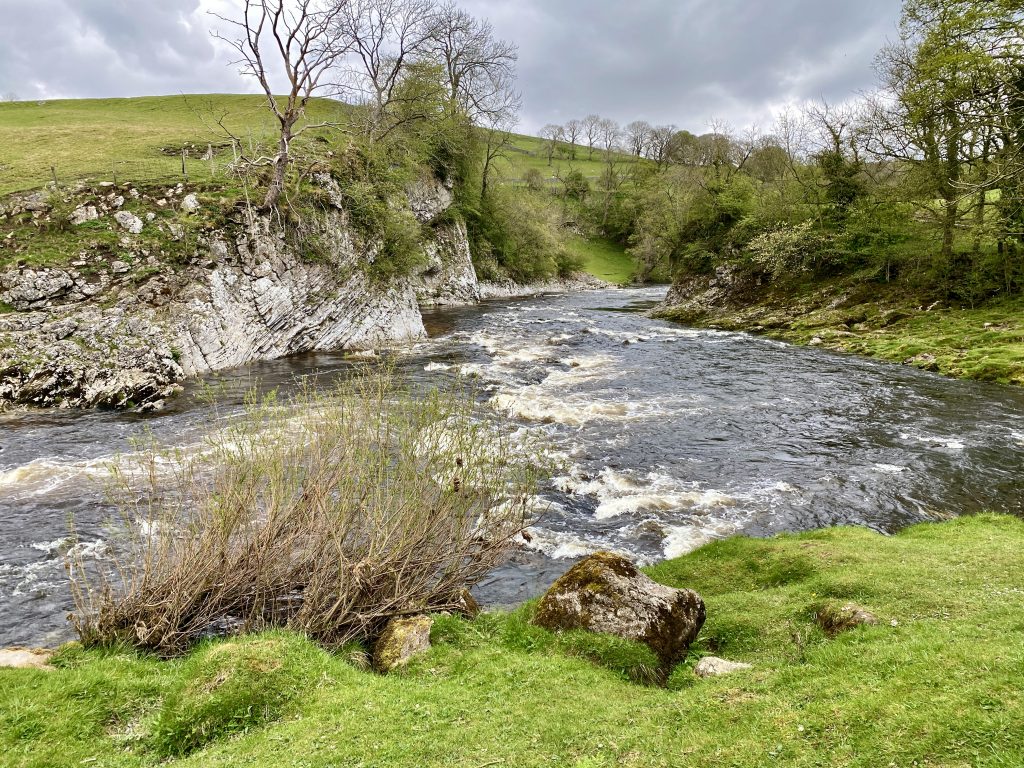
Stepping stones on the River Wharfe, next to Hebden Suspension Bridge.
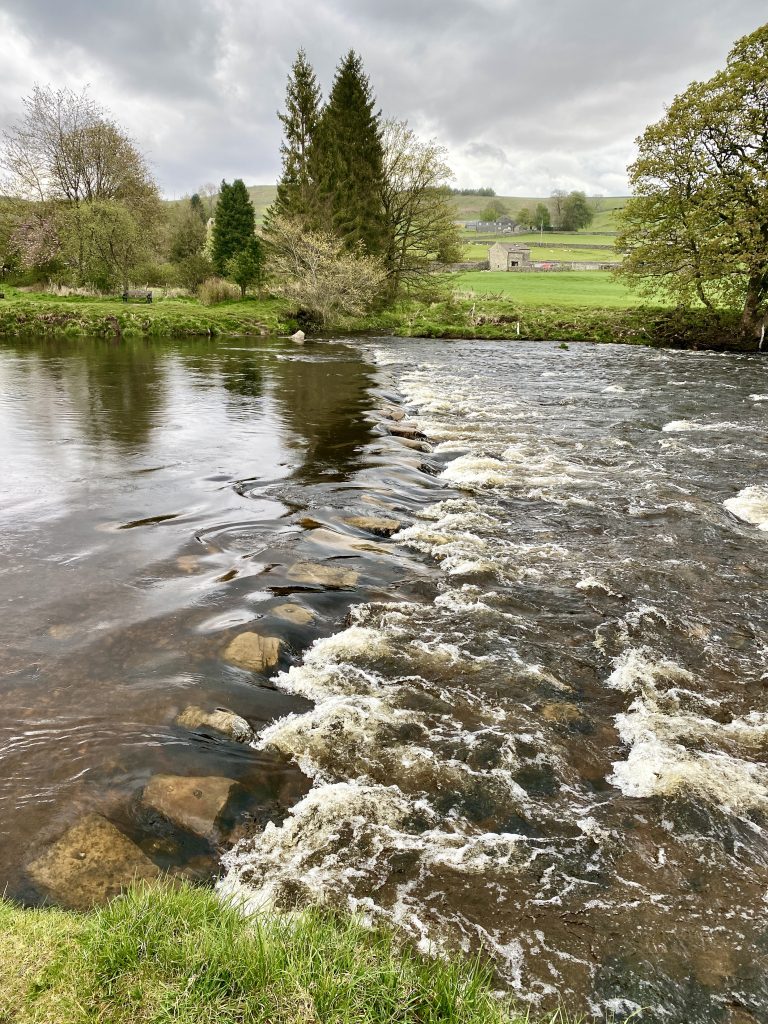
Hebden Suspension Bridge
In 1884, following the drowning of a local man while trying to cross the stepping stones on the River Wharfe below Hebden, a committee was formed with the intention of building a footbridge. A great storm the previous year had also destroyed Burnsall Bridge down stream causing the villagers great problems.
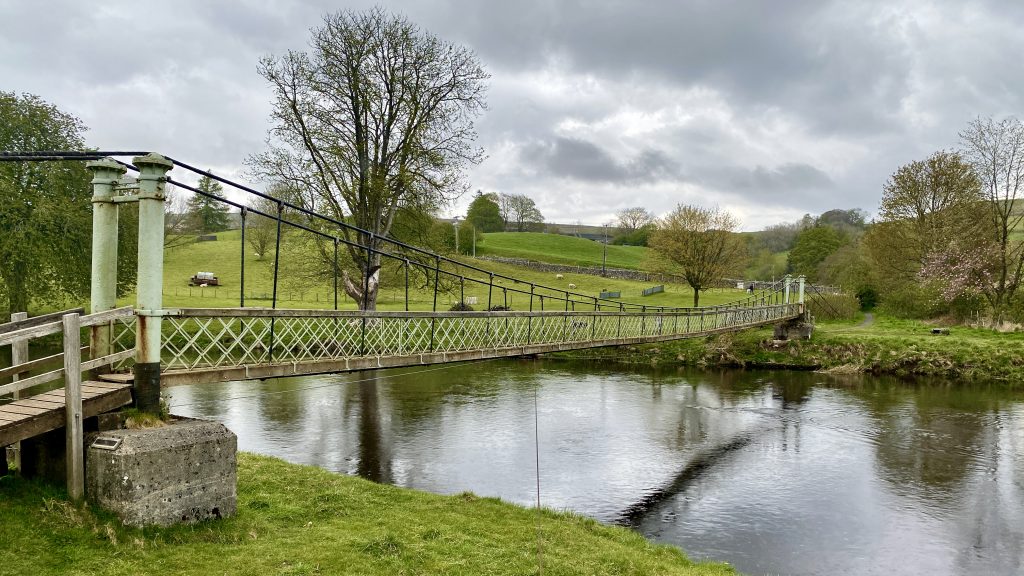
The new bridge was designed as a suspension bridge and was built by the village blacksmith, William Bell. 262 yards of redundant steel rope was bought for it from the Hebden Moor Mining Company. Funding for the bridge was raised through public subscription and a grand opening was held in 1885 with a brass band and a public tea. The bridge now carries a popular public footpath and was recently refurbished by the National Park Authority.
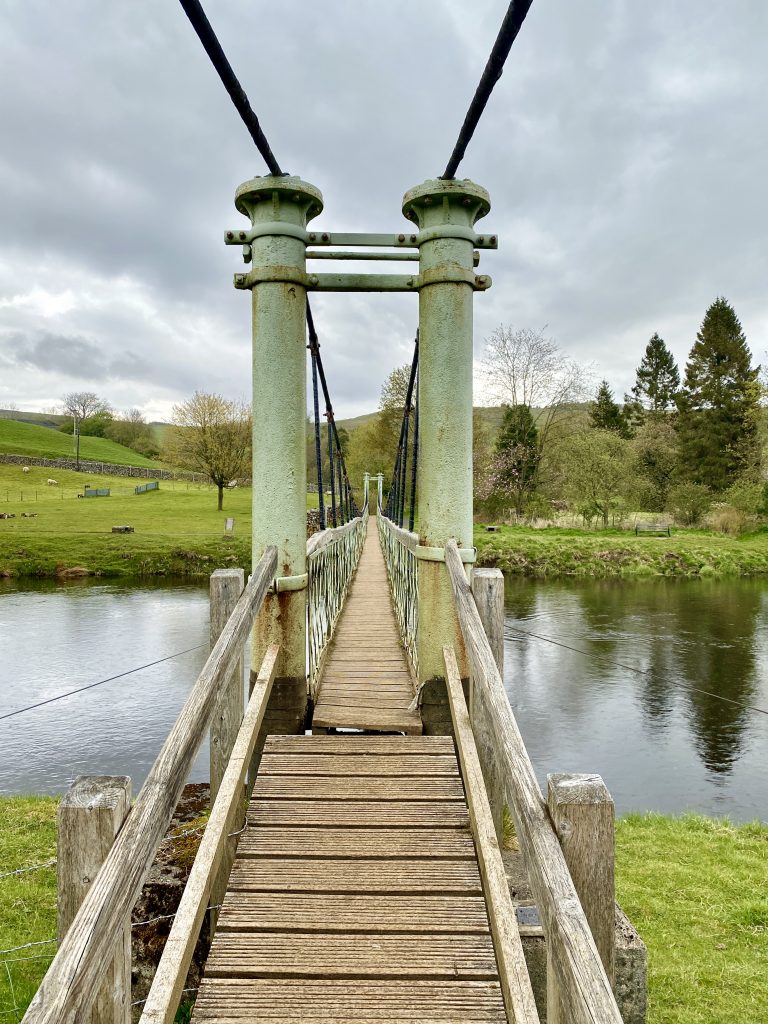
Wier on Hebden Beck.
